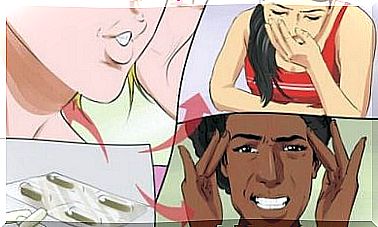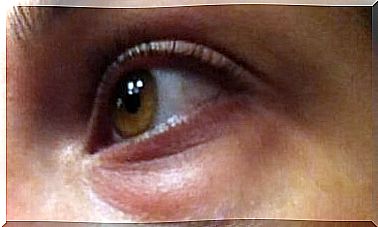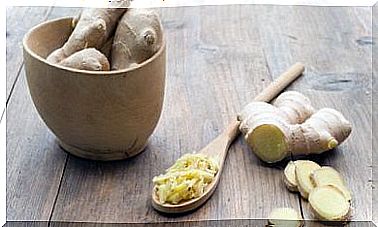Róża: Everything You Need To Know About Her Treatment
Rose is caused by group A Streptococcus bacteria, which are the same bacteria that cause angina. The infection causes large red lumps on the skin. In most cases, it mainly affects the face and legs.
Symptoms
- Fever.
- Feeling cold.
- General discomfort.
- Skin problems, such as redness and swelling with raised edges.
- There may also be blisters in the affected area. When the rose affects the facial zone, the inflamed area usually includes the nose and both cheeks.
In addition, erysipelas also cause inflammation of the glands which can be very uncomfortable as it is very painful for the patient.
The reasons
Conditions that cause the skin to crack, such as athlete’s foot and eczema, can sometimes lead to erysipelas. It can also occur when the bacteria spread through the nasal passages after the nose or throat is infected.
How is a rose treated?
Pharmaceutical treatment
Streptococcus bacteria are responsible for the majority of rose cases. Therefore, the main drug in this disease is penicillin. Oral or intramuscular penicillin is sufficient to treat most classic erysipelas. Treatment should last 5 days, but may be extended by your doctor if the infection does not improve.
A first-generation cephalosporin may be another option if the patient is allergic to penicillin. Cephalosporins may cross-react with penicillin and should be used with great caution in patients with a history of severe penicillin allergy.
Some researchers believe that the facial rose requires empirical treatment with a penicillinase-resistant antibiotic – such as dicloxacillin or nafcillin – to treat staphylococcus aureus. However, there is no evidence to support this recommendation.
Roxithromycin and pristinamycin are extremely effective in the treatment of erysipelas. Several studies have shown greater efficacy and fewer side effects in treatments that use these drugs compared to those that use penicillin. Although the US Food and Drug Administration has not approved these drugs in the United States, they are used in Europe.
The FDA has approved 3 antibiotics – oritavancin (Orbactiv), dalbavancin (Dalvance), and tedizolid (Sivextro) – for acute bacterial infections and skin treatment. These agents are active against Staphylococcus aureus (including methicillin-resistant nematodes), Streptococcus pyogenes, Streptococcus agalactiae, and Streptococcus anginosus , among others.
Most people with erysipelas can be treated at home, but some cases may require visits to the hospital. Depending on the severity of the patient’s condition, the treatment plan may include home remedies, medications, or surgery.
Surgery
Doctors will only choose to have surgery if the infection is progressing rapidly and killing healthy tissue (causing necrosis). Surgery may then be necessary to remove dead tissue. While patients can avoid relapse after proper antibiotic treatment, time is of the essence here.
In addition to antibiotics, other forms of treatment include:
Symptomatic treatment of pain and fever
- Cold compresses
- Hydration (if possible by drinking plenty of water).
- Sick limb elevation. Holding up is recommended to reduce inflammation and pain.
- Saline dressings. Saline dressings should cover areas showing ulceration and necrosis. In addition, they should be changed every 2 to 12 hours, depending on the severity of the infection.
Natural remedies for the rose
- Treatment with almond oil. Cold-pressed almond oil is one of the most effective ways to eliminate red spots, which are a symptom of rose hips. After a few uses of almond oil, the skin can fully regenerate as if there were never any spots or marks.
- Treatment with wormwood. You should clean the area with wormwood tea twice a day. Then take the medications prescribed by your doctor. Your doctor will most likely prescribe antibiotics that are very effective in the early stages of the infection
- Treatment with green lettuce. The use of lettuce is another surprising natural treatment. Make sure to scald it lightly before applying.
- Treatment with mallow. Another great way that you can try is cooked mallow leaves and roots (decoction).
Rose – Recommended Diet
The diet should contain a large amount of fruit (about 20% of the daily intake). In addition, your diet should completely exclude fried foods and meat. Instead, choose fish and eggs. Follow this diet for 6 months, allowing yourself to make slight changes from time to time.
Reference:
Erysipelas Treatment & Management, MedScape, https://emedicine.medscape.com/article/1052445-treatment
Which treatment for erysipelas? Antibiotic treatment: drugs and methods of administering, PubliMed.gov. https://www.ncbi.nlm.nih.gov/pubmed/11319362
Erysipelas: Causes, symptoms, and treatment, Medical News Today, https://www.medicalnewstoday.com/articles/317973.php
Erisipela: causas, factores de riesgo, signos, síntomas, tratamiento, prevención, pronóstico, ePainAssist, https://www.epainassist.com/skin/erysipelas
Erysipelas, National Organization for Rare Disorders NORD, https://rarediseases.org/rare-diseases/erysipelas/









